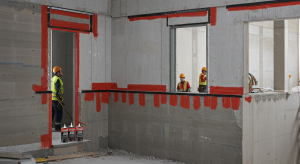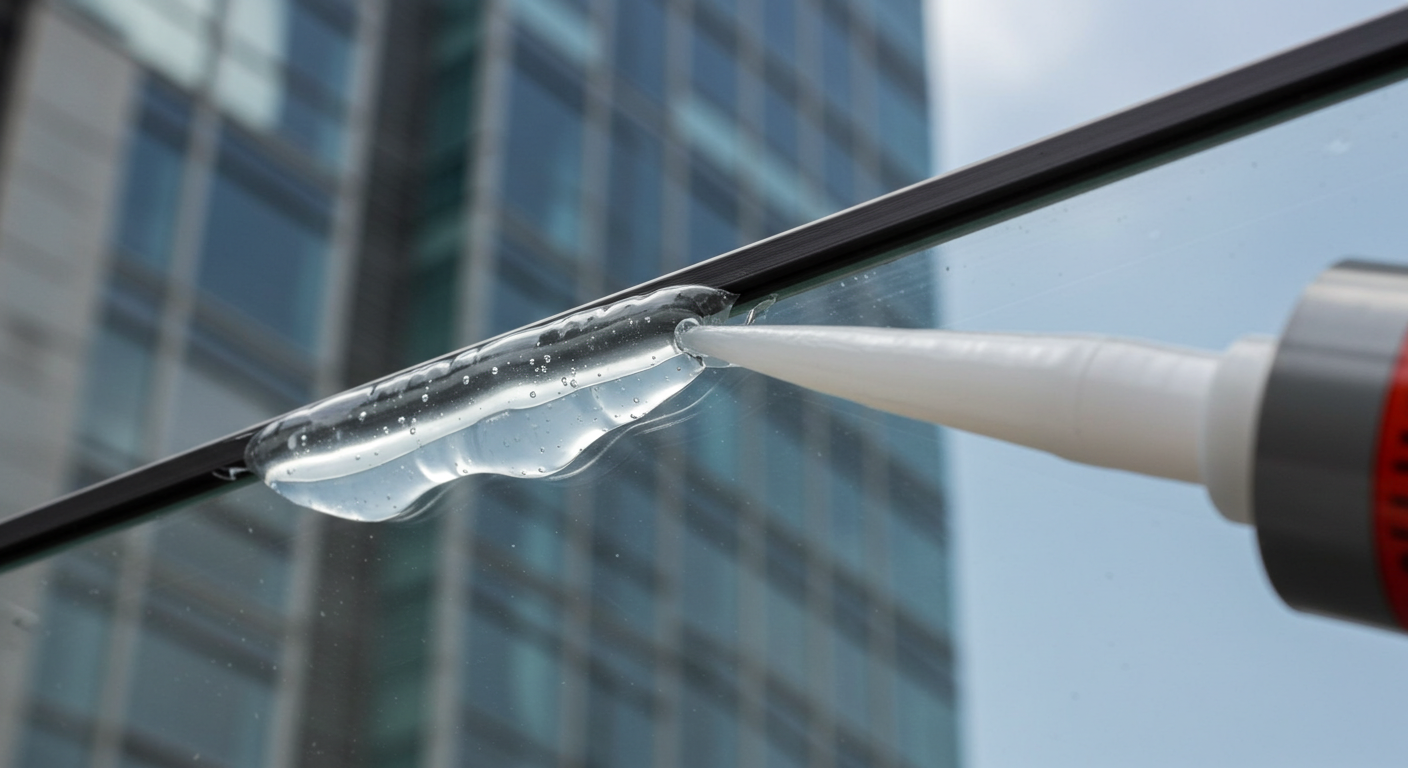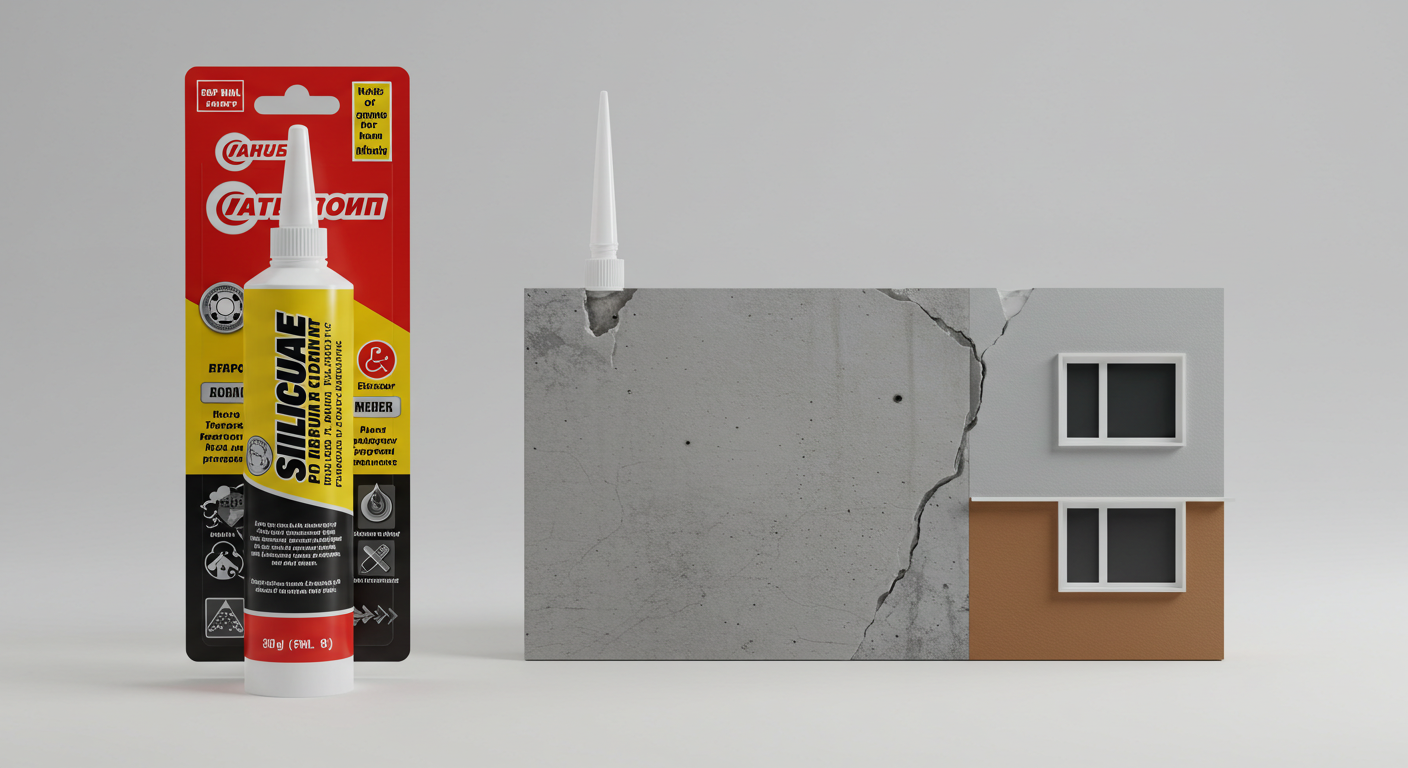Fire-Resistant Sealant for Building Safety: Why It Matters More Than Ever
2025-02-01
When you think of fire safety in buildings, what comes to mind first? Perhaps it’s fire alarms, sprinkler systems, or fire extinguishers. These are essential, but there’s a less obvious, often overlooked component that plays a major role in preventing the spread of fire: fire-resistant sealants.

These sealants help contain flames, smoke, and toxic gases within a specific area, buying valuable time during emergencies. In this post, we’ll explore what they are, how they work, and why they’re an indispensable element of modern building safety. We’ll also compare key sealant types and share insights on choosing the right one for your project.
What is a Fire-Resistant Sealant?
At its core, a fire-resistant sealant is a material designed to block fire and smoke from spreading through gaps and joints in walls, floors, and ceilings. Think of it as the fireproof glue that seals off potential escape routes for fire within a building’s structure. It’s most commonly used around doors, windows, pipe penetrations, electrical conduits, and construction joints.
Unlike standard caulking or sealing materials, fire-resistant sealants maintain their integrity even under extreme heat. When exposed to high temperatures, they expand and form a protective barrier to slow down the fire’s progress.
Why Are Fire-Resistant Sealants Important?
Buildings are full of hidden vulnerabilities—places where fire can sneak through if not properly contained. Imagine a high-rise apartment where fire starts in one unit. Without proper sealing, it could quickly spread through unsealed joints and utility penetrations to adjacent apartments, leading to a catastrophic event.
Here’s why these sealants are so crucial:
- Enhanced Life Safety: Fire-resistant sealants provide occupants with additional time to evacuate safely.
- Minimized Property Damage: By containing the fire, these sealants limit structural damage and protect assets within the building.
- Code Compliance: Many building codes require fire-resistant sealants to meet minimum safety standards.
- Insurance Benefits: Buildings equipped with proper fireproofing measures often benefit from reduced insurance premiums.
Types of Fire-Resistant Sealants and Their Applications
Not all fire-resistant sealants are created equal. Depending on the type of material and application, they can vary in effectiveness and cost. Below is a comparison of common fire-resistant sealants:
| Sealant Type | Material Composition | Best Applications | Key Features |
|---|---|---|---|
| Intumescent Sealant | Expands when exposed to heat | Around pipe penetrations, cables, and joints | Swells up to block gaps as fire temperatures rise, preventing spread |
| Silicone-Based Sealant | Silicone polymers | Windows, door frames, and exterior applications | Highly flexible, water-resistant, and durable under varying temperatures |
| Acrylic-Based Sealant | Water-based, acrylic resins | Walls, ceilings, and interior joints | Easy to apply, offers good adhesion, but less suitable for high-moisture areas |
| Epoxy-Based Sealant | Epoxy resins | Structural applications, heavy-duty projects | Excellent strength and chemical resistance; often used in industrial buildings |
Let’s take a closer look at how these sealants differ in real-world applications:
1. Intumescent Sealants
These are some of the most commonly used fire-resistant materials in construction. Their unique ability to expand under high heat (up to 10 times their original volume) makes them ideal for sealing gaps around pipes, ducts, and cables, which often provide easy pathways for fire to spread. As the sealant swells, it forms a thick char that effectively blocks the opening.
Key Takeaway: Intumescent sealants are versatile and highly effective for dynamic areas prone to heat exposure. However, they’re typically more expensive than standard sealants.
2. Silicone-Based Sealants
Silicone-based sealants are favored for their flexibility and resistance to water, making them ideal for exterior applications like sealing windows and doors. Their fire-resistant versions maintain flexibility even under extreme heat and prevent cracking, which could otherwise allow flames and smoke to pass through.
Key Takeaway: Ideal for locations where both moisture resistance and fire protection are required, though they may not expand as much as intumescent sealants.
3. Acrylic-Based Sealants
Acrylic sealants are affordable and easy to apply, making them popular for sealing joints within walls and ceilings. While they offer adequate fire resistance for many applications, they are not recommended for high-moisture environments due to their water-soluble nature.
Key Takeaway: Perfect for interior spaces but avoid using them in kitchens, bathrooms, or exterior areas exposed to water.
4. Epoxy-Based Sealants
Epoxy-based sealants are heavy-duty solutions often used in industrial and commercial applications. They provide excellent chemical and heat resistance, making them ideal for sealing around structural steel or in areas with heavy machinery.
Key Takeaway: Highly durable and strong, but typically overkill for residential projects unless in utility-heavy zones like mechanical rooms.
Key Insights on Choosing the Right Fire-Resistant Sealant
Choosing the right fire-resistant sealant depends on several factors, including the type of building, location of the application, and budget. Here are some practical tips:
- Assess the Fire Rating Requirements: Sealants come with different fire ratings, typically measured in hours (e.g., 1-hour or 4-hour fire resistance). Higher ratings are suitable for critical applications like stairwells or mechanical rooms.
- Understand the Type of Joint or Gap: Is it a static joint (e.g., wall penetration) or a dynamic one (e.g., around doors)? Dynamic joints require flexible sealants to accommodate movement without cracking.
- Consider Environmental Conditions: For areas prone to moisture or extreme temperatures, silicone or epoxy-based sealants are better suited than acrylic options.
- Follow Manufacturer Guidelines: Each product comes with specifications regarding the maximum gap size, required application thickness, and curing time. Ignoring these can compromise the sealant’s effectiveness.
Common Misconceptions About Fire-Resistant Sealants
Before we wrap up, let’s debunk a few myths surrounding fire-resistant sealants:
- Myth #1: “All sealants are fire-resistant.”
This is a common misconception. General-purpose caulk or sealants do not have fireproofing capabilities. Always look for products explicitly labeled as fire-resistant. - Myth #2: “Once applied, fire-resistant sealants last forever.”
Fire-resistant sealants require periodic inspection and maintenance to ensure their effectiveness over time. Factors like age, environmental exposure, and building movement can degrade them. - Myth #3: “Sealants alone are enough for fire safety.”
While sealants play a critical role, they are just one component of a comprehensive fire safety strategy. Pair them with proper compartmentalization, fire alarms, and suppression systems.
Final Thoughts: Sealing the Deal on Building Safety
When it comes to fire safety, every second counts. Fire-resistant sealants act as silent guardians, preventing fire from spreading and giving building occupants the precious time they need to escape. Whether you’re a contractor working on a new project or a building manager overseeing maintenance, investing in the right sealant can save lives and protect property.
Remember, choosing the right sealant isn’t just about meeting code requirements—it’s about ensuring the safety of everyone who enters the building. By understanding the strengths and limitations of various sealants, you can make informed decisions that contribute to safer, more resilient buildings.
So, next time you inspect a construction site or renovation project, don’t just think about the big-ticket fire safety measures. Look closer at those walls, floors, and gaps—they might just be hiding the unsung hero of fire protection.
For more insights on fireproofing materials, check out this guide on Best MS Polymer Sealant for Construction and explore how the right materials can make a world of difference.




